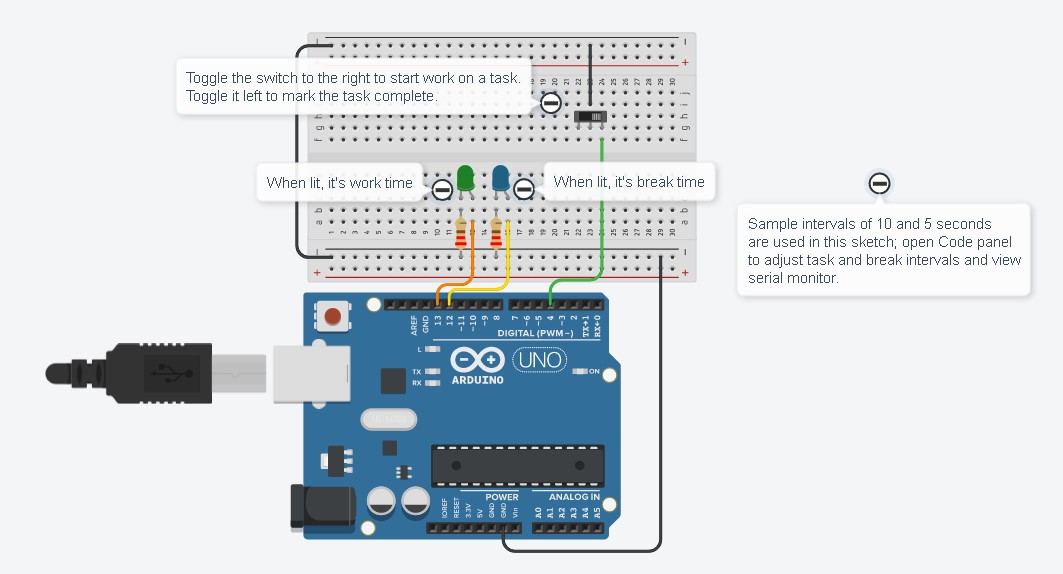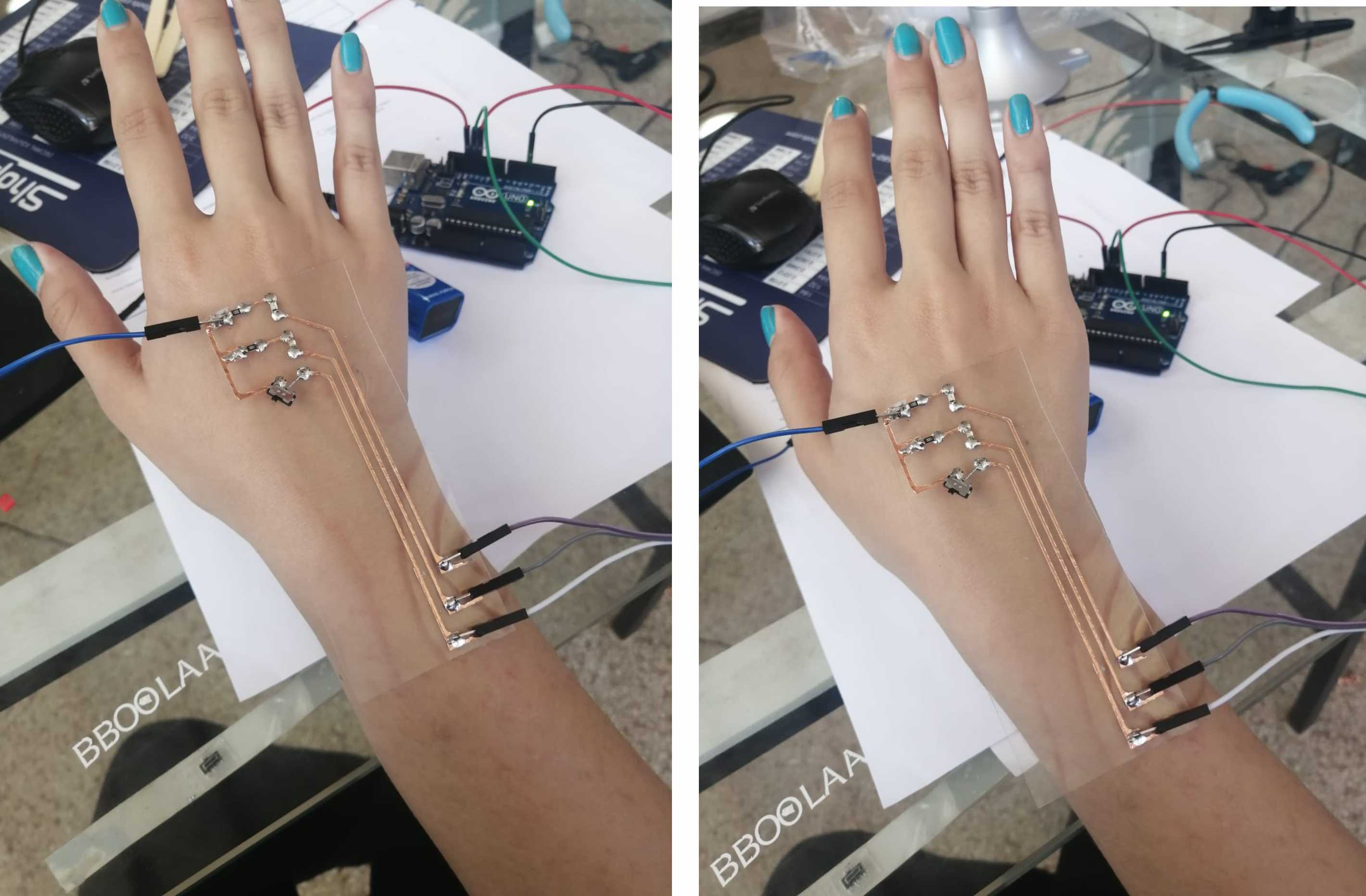Dec 13, 2022
This class focus on a wearable computing subfield that integrates technology into cosmetics to be applied directly to one’s skin, fingernails and hair in order to transform the body’s surface in an interactive platform. Connect your body with environment and enhance your communication.
1.Inspiration and research
2.Pomodoro technique
3.Idea
4.Ciurcuit
5.Code
6.Test
7.Files
8.References
For the week of skin electronics I decided to investigate more about time management and how to use this week to do something related to this topic that can be used by people while they work to make them more efficiente and less focus on their phones.
Skin Electronics is an experimental and innovative field, this week's lecture was taugh by Katia Vega, she works on many projects related to this field, each one of her projects integrate circuits onto the skin using hair extensions, nails, cosmetics, or even using facial muscles to control behaviours. Some of her projects are:

Here's a quick recap about this technique, all the information is from this page.
A super simple method to help you get your tasks done. Named after a pomodoro (tomato) kitchen timer, the essence of it involves considering in advance how many pomodoros you might need for what you want to get done, setting your timer for, normally, 25 minutes and then focusing on your task until the time’s up. Then take a 5 minute break. That’s one pomodoro. After you’ve done four pomodoros take a longer break, of about 30 minutes.
The idea is to develop a circuit that can be attached to the hand with 2 led lights, one light indicates the time to work and the other the time to rest. The circuit should stick to the right hand. This could help the individual to schedule their work habits and be more productive.

I started making a test in a protoboard using Arduino. Here's the test:


Here are my results:
Skin electronic test de Silvia LugoI started designing the circuit using Rhinoceros, I came up with this design:

Using the vynil cutter I fabricate the circuit and sold the components:
 Cutting the circuit.
Cutting the circuit. Components solded.
Components solded.I found the code for a simple pomodoro timer here. For my test I change the time frame to seconds instead of minutes. If you want to change the this remember this example tracks time with millis.
